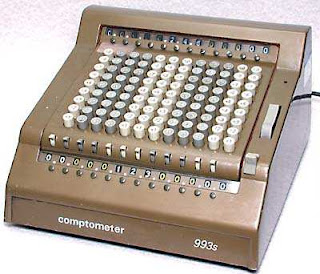There are plenty of machines in each office nowadays – laptops, desk computers, lamps, printers, faxes, tablets, photocopiers, smart phones. All of these are suited for our needs and easy to work with, but the technology behind them is sometimes unknown.
Today let us throw some light on one of the most common machines used worldwide i.e. photocopier machine.
Photocopying is a process which makes paper copies of documents and other visual images quickly and cheaply.
It was introduced by Xerox in the 1960s, and over the following 20 years it gradually replaced copies made by carbon paper, mimeograph machines and other duplicating machines.
Chester Carlson, the inventor of photocopying, was originally a patent attorney and part time researcher and inventor. As he worked at his job, he noted that there never seemed to be enough carbon copies of patent specifications, and there seemed to be no quick or practical way of getting more. The choices were limited to sending for expensive photo copies, or having the documents retyped and then reread for errors.
Carlson was frustrated from painful attacks of arthritis. He found this a painful and tedious process. This prompted him to conduct experiments in the area of photoconductivity, through which multiple copies could be made with minimal effort.

Carlson decided to dip into his meagre resources to pursue his research. He set up a small lab in nearby Astoria and hired an unemployed young physicist, a German refugee named Otto Kornei, to help with the lab work.
It was here, in a rented second-floor room above a bar, where xerography was invented.
This is Carlson's account of that moment: "I went to the lab that day and Otto had a freshly-prepared sulfur coating on a zinc plate. We tried to see what we could do toward making a visible image. Otto took a glass microscope slide and printed on it in India ink the notation '10-22-38 ASTORIA.' We pulled down the shade to make the room as dark as possible, then he rubbed the sulfur surface vigorously with a handkerchief to apply an electrostatic charge, laid the slide on the surface and placed the combination under a bright incandescent lamp for a few seconds. The slide was then removed and lycopodium powder was sprinkled on the sulfur surface. By gently blowing on the surface, all the loose powder was removed and there was left on the surface a near-perfect duplicate in powder of the notation which had been printed on the glass slide”.

This process was repeated several times to convince that it was true, then they made some permanent copies by transferring the powder images to wax paper and heating the sheets to melt the wax.
Carlson tried to sell his invention to some companies, but because the process was still underdeveloped he failed.
From 1939 to 1944, he was turned down by more than twenty companies. Even the National Inventors Council dismissed his work. How difficult it was to convince anyone that tiny plates and rough image held the key to a tremendous new industry. The years went by without a serious nibble. Carlson became discouraged and several times decided to drop the idea completely. But each time he returned to try again.
Finally, in 1944, Battelle Memorial Institute, a non-profit research organization, in Columbus, Ohio, became interested, signed a royalty-sharing contract with Carlson, and began to develop the process.
In 1947 Haloid, a small New York based organisation manufacturing and selling photographic paper at that time, approached Battelle to obtain a license to develop and market a copying machine based on this technology. Battelle entered into an agreement with Haloid (later to be known as Xerox), giving Haloid the right to develop a xerographic machine.
In 1955, Haloid - by then Haloid Xerox - produced Copyflo, the first automated xerographic machine. It produced enlarged prints on a continuous roll from microfilm originals, and spawned a line of Xerox microsystems products which are still turning significant profits. Copyflo was also the first product to use a drum, instead of a plate, as the photoconductive surface. The rotating drum, an ingenious solution to the problem of how to make copies quickly, has been used again and again in Xerox machines.

However, it wasn't until 22 years after electro photography had first been conceived that the first true office copier was produced. In 1958, the introduction of the first-ever commercial push button photocopier machine Model the “Xerox 914” turned into success. It was called ‘914’ because it could handle paper legal size paper which is 9 inches x 14 inches in size. The success of “Xerox 914” was so huge that the company changes its name to Haloid Xerox in 1958.
The name was chosen based on the unique dry printing technique, and shortened to follow the model set by the other big company at the time – Kodak. Three years later, another renaming occurred and the company was called simply Xerox.
This was the model that hit it big that by 1965 earned Xerox revenue over $500 million dollars and today Xerox is such a household name that people confuse the name of the company for the process called photocopying!














